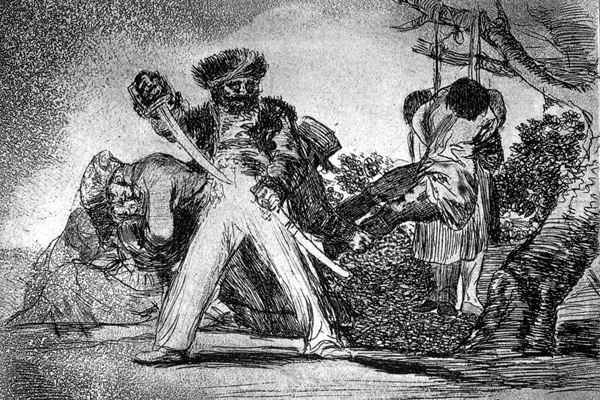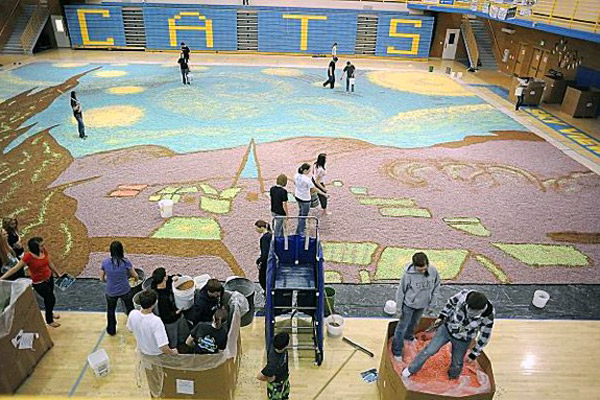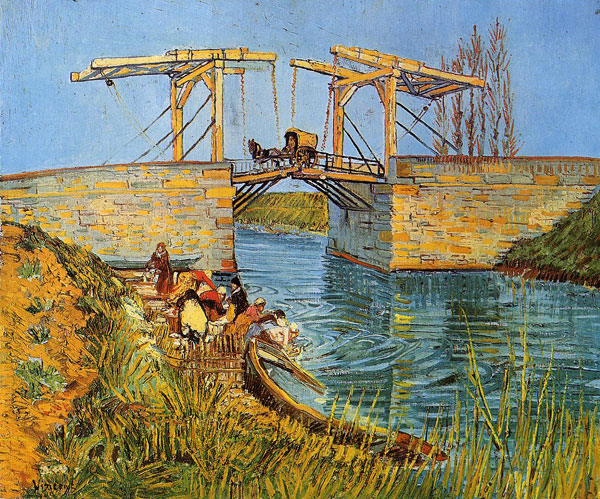
As seen yesterday, even if you manage to find the vantage from which a painter sketched a real-life scene, history, changes in perspective, and the artist’s own agenda might mean you’ll never actually be able to see the world from that same perspective. Still, it’s sure fun to try. One of the more interesting examples of pairing art with the physical world might be the “Pont Van Gogh”, a brook-side destination spot outside Arles that offers a painter’s-eye view of the bridge used in Vincent Van Gogh’s various takes on “Le Pont de Langlois”, all painted around 1888. From this spot, one can take in the quaint wooden drawbridge, the babbling canal, the wind-swept reeds that inspired the artist over a century ago—even though Van Gogh’s actual viewpoint was several miles away.
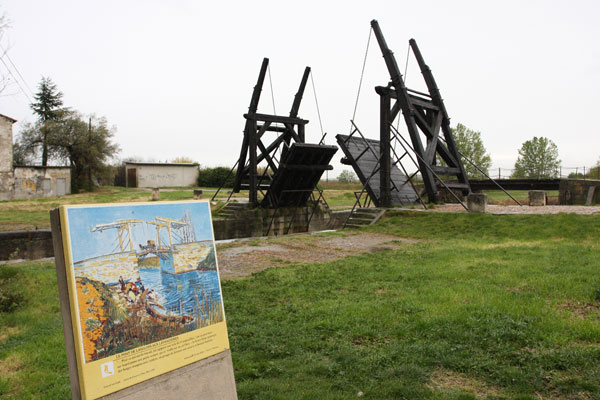
Le Pont de Langlois, mistakenly written down as “Le Pont L’anglais (the English bridge)” in Van Gogh’s letters, was but one of a series of eleven identical drawbridges set up on similar crossings of Arles’ canal during the 1830s. Around 50 years after Van Gogh painted the spot, the bridge was replaced by a more modern concrete structure, which itself was destroyed along with almost every single bridge crossing Arles’ canal by retreating German troops in 1944. But so strong was local love for Van Gogh and the images of the countryside he captured, that in 1962, officials and fans took a dismantled bridge of similar style and era from Fos-sur-Mer and installed it on the picturesque crossing on which it now stands, waiting for art lovers with their hungry cameras. Granted, the landmark site is several miles downstream from what was the original setting of “Le Pont de Langlois” and one could easily deride the installation as a cheap incitement to tourists. But “Pont Van Gogh” also recaptures Arles as it would like to see itself, as it would like to represent itself. In a region where the past can be so close, why not remake and preserve your land in the image of the artist who represented it best and most famously?
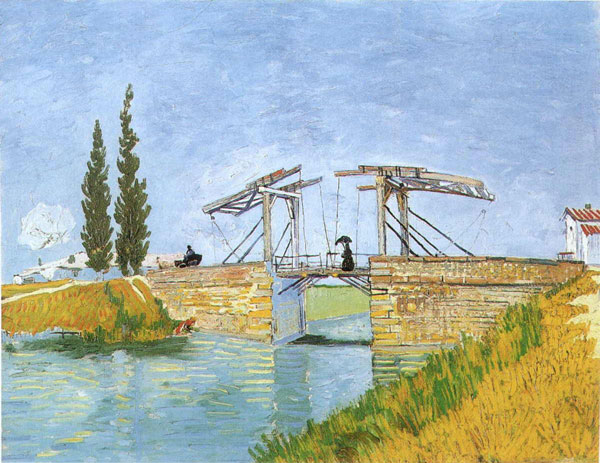
For a full tour through Van Gogh’s Arles and more European cities as seen through the artists that captured them best, pre-order a copy of our “Art + Travel Europe: Step into the Lives of Five Famous Painters”. For information on visiting the Van Gogh bridge, click here.
Images:
Top—”Le Pont Langlois et Lavandi&egrav;res, Van Gogh, 1888, courtesy of the Kröller-Müller Museum, Otterlo, Netherlands.
Middle—”Van Gogh Bridge” today, photo by Akira Chiba.
Bottom—”Le Pont Langlois ´ Arles”, Van Gogh, 1888, courtesy of The Wallraf-Richartz Museum, Cologne, Germany.
Tagged with: Arles Art Art + Travel France painting pont de langlois pont van gogh Van Gogh vincent van gogh
 MUSEYON BOOKS Smart City Guides for Travel, History, Art and Film Lovers
MUSEYON BOOKS Smart City Guides for Travel, History, Art and Film Lovers
